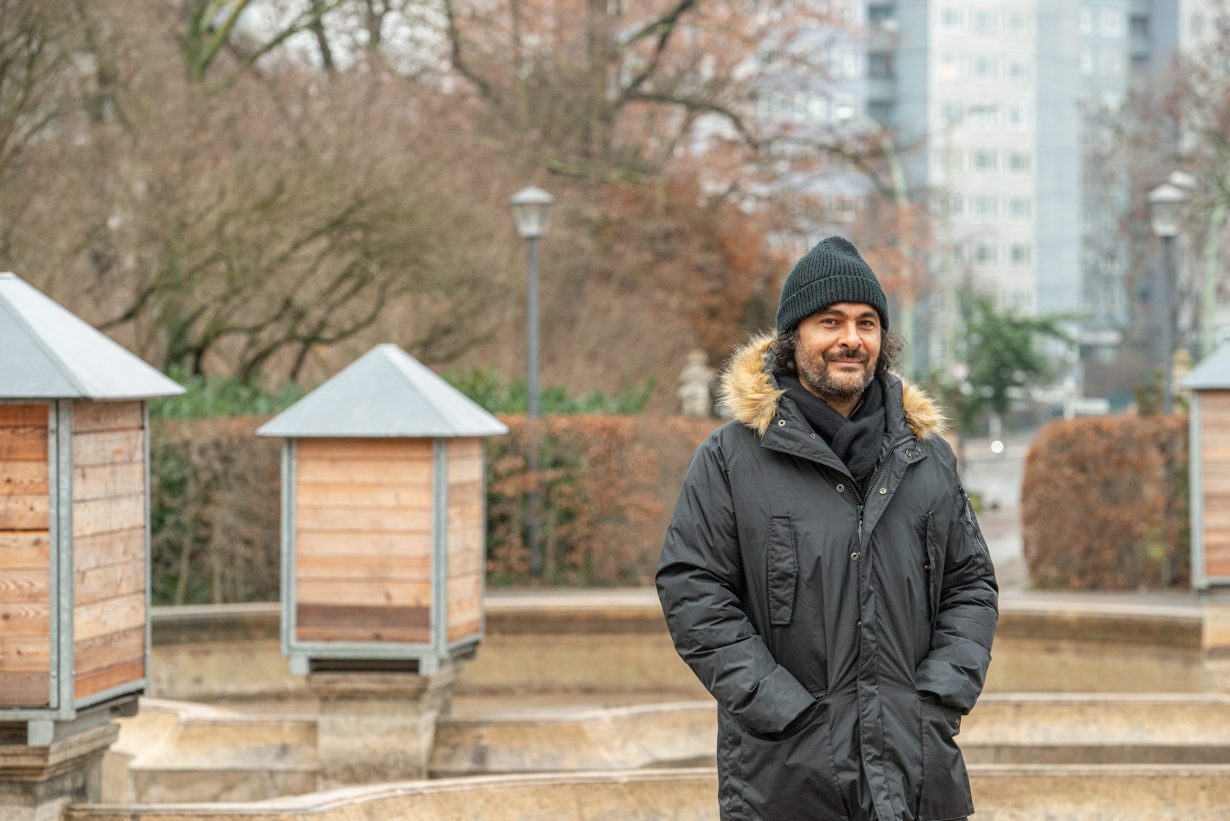
Kader Attia, who will curate the Berlin Biennale in 2022, has appointed a five-strong team to help him. Ana Teixeira Pinto, Đỗ Tường Linh, Marie Helene Pereira, Noam Segal and Rasha Salti, the artist says, will help deliver his exhibition’s ‘core decolonial concept through the lenses of their diverse backgrounds and critical practices.’
Teixeira Pinto is a Berlin-based theorist based who is also collaborating with Attia (as well as Anselm Franke) on a forthcoming conference and podcast series titled Whose Universal? at Haus der Kulturen der Welt, Berlin. Tường Linh is a curator and researcher based in Hanoi, where she cofounded Six Space and has collaborated with venues such as VCCA – Vincom Center for Contemporary Arts, Mơ Art Space, Hanoi DocLab and Nhà Sàn Collective, all in the Vietnamese capital. Also running a much-praised artist-run space is Pereira, a curator from Dakar, Senegal, where she is the director of programmes at RAW Material Company. Pereira cocurated Scattered Seeds in Cali, Colombia from 2015 to 2017, and Battling to Normalize Freedom at Clark House Initiative in Mumbai in 2017.
New York-based Segal founded Rothschild 69, an independent nonprofit art space in Tel Aviv, which ran from 2008 to 2012 and last year she oragnised the 2020 Aurora Biennial, Dallas. Salti is a Beirut and Berlin based researcher, whose retrospective of Syrian cinema, The Road to Damascus, toured worldwide in 2006 to 2008. In 2018, working with Koyo Kouoh at Haus der Kulturen der Welt, Berlin, she staged Saving Bruce Lee: African and Arab Cinema in the Era of Soviet Cultural Diplomacy.
Giving further hint as to the direction of the show, in October, in a theme integral to his own art making, Attia told Berlin Art Link he believed ‘art is a form of repair’.
‘It has an incredible capacity to help us to engage in this conversation. The field of emotion plays a significant role in the question of injuries, particularly collectively when we speak about trauma. But it is also dangerous. It’s a tool to gather and manipulate a crowd; a form of catharsis when it’s used by charismatic leaders to run insanely huge movements and impact public opinions. Artists can stand against this form of fascism because they have the capacity to compete with crowd magnetism.’